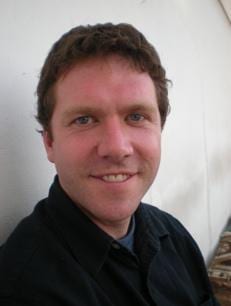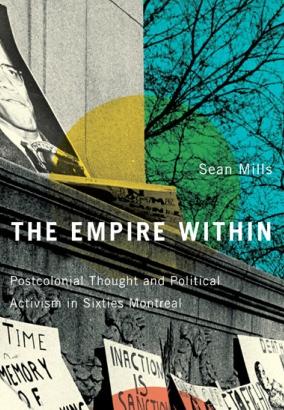
Sean Mills
When it comes to activist history, according to Sean Mills, author of The Empire Within: Postcolonial Thought and Political Activism in Sixties Montreal, “we have a problem with memory.”
“We need to remember the various struggles of gay and lesbian groups and feminists and the black Caribbean movement, etcetera, as being not marginal but central to the 1960s and the transformation of society that came out of the 1960s.”
In order to help people rethink the history of Montreal, Mills has recorded a podcast of the popular walking tours he led this spring. The tour visits some of the often-overlooked urban sites that were important to Montreal’s political history.
“I should say off the bat, I’m not an expert in gay politics or gay history,” Mills explains. “but it certainly does factor into the book.”
As he says, “Although there was, of course, a gay subculture throughout the 1960s, the dominant dissident movements themselves were largely blind to issues around gay rights. Let’s put it this way, the importance of gay rights wasn’t on their radar at that point, to the extent that even one of the major main theoreticians of the era, Pierre Vallières, only came out publicly as gay and began defending gay rights well after the 1960s were over.”
Though much of Montreal’s gay and lesbian movement post-dates the end of Mills’ book, he “tries to show how some of these currents develop and proliferate throughout the activist community in the 1970s.”
Mills sat down with Xtra to share a few gay and lesbian sites that contributed to Montreal’s colourful history.
2065 St Denis. Site of a drop-in centre run by the Front de libération homosexuel, 1971-2.
“It was on St Denis, below Sherbrooke, where the first meetings of the Front de libération homosexuel took place in March 1971,” Mills says. “The FLH was kind of the first, real public manifestation of gay liberation in Montreal. Anglophones and francophones were a part of it.
The group itself had existed, say, about fourteen months. What happens in June 1972, just as they were opening, they were having a kind of housewarming for their new meeting place, the police descended and raided it. That destroyed the group. The group never really recovered from that.”
3764 Saint-Laurent. A Woman’s Place. In 1973-4, acted as a meeting place for Montreal Gay Women.
Montreal Gay Women was one of the first lesbian groups in Montreal, formed when it broke away from Gay McGill, an organization of gays and lesbians formed at McGill University a year earlier.
“Throughout its existence, it held many social events, had a reference centre, a publication, and organized conferences on lesbian issues,” Mills explains. “It was largely Anglophone, and was non-hierarchical. A Woman’s Place was one of its first meeting places, but they then moved on to other locations.”
Corner of Stanley and St Catherine.
In October 1977, the police raided a gay bar called Truxx.
“It was a very public thing, a mass arrest. One hundred and forty six people were arrested. In the aftermath of this, gays and lesbians organized a big protest in Montreal at midnight on the corner of Stanley and St. Catherine streets. So you see this sort of large, growing movement of resistance,” Mills says.
Police repression is a major part of the story of gay and lesbian politics in the 1970s.
“In many ways, it’s that police repression — cracking down on bathhouses and gay bars, etcetera — that creates a form of resistance that catalyzes everything, that helps give a push to the gay liberation movement.
“If you want to think about movements that have transformed Quebec society, certainly the gay liberation movement would be right up there.”
Download Mills’ walking tour podcast.

 Why you can trust Xtra
Why you can trust Xtra


